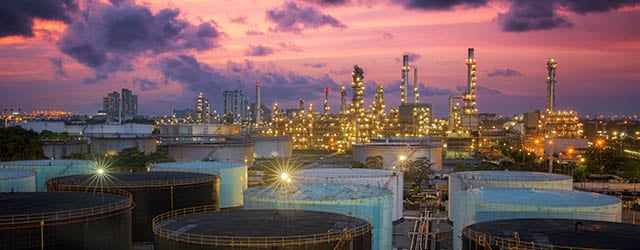Saudi Arabia needs a strategy to diversify its oil-based economy. Can change come fast enough?

Saudi Arabia is stepping up efforts to remake its oil-based economy with the help of cross-border investment, even as it fights to maintain its oil-market share in the face of increased US energy production from shale. The sharp drop in oil prices, partly as a result of the kingdom’s refusal to cut crude production, is putting pressure on Riyadh’s budget, which will be in deep deficit this year. The fiscal challenge, however, could be a hidden boon, forcing the country to institute major, oft-postponed economic reforms.
“Gone are the days when Saudi Arabia could just issue debt to cover its deficits,” says John Sfakianakis, Riyadh-based Middle East director at investment manager Ashmore Group. “To be fiscally prudent, it must consider alternative means, such as some form of income tax or value-added tax, and a reduction in energy subsidies.”
Although its economy is much larger than that of neighboring United Arab Emirates, which has a majority expat population, Saudi Arabia should follow the UAE example, Sfakianakis says. In July the UAE said a government-appointed committee would set gasoline prices based on global oil-price benchmarks, ending billions of dollars worth of subsidies. The UAE authorities also are considering introducing a corporate tax and a value-added tax (VAT).
“Saudi Arabia’s diversification drive has been slow, and the country needs to push and enhance the effort,” Sfakianakis says. It is unclear whether or not the plan will work, however, since there are few cases where such diversification efforts have been truly successful, he says.
King Salman, who ascended to the throne in January, is running out of alternatives, Sfakianakis says. “The kingdom has to privatize the telecom industry, the railroads, the ports and the airports,” he says. “The political will is there, and government officials are thinking seriously about privatizing more companies.”
The opening of the Saudi stock exchange, the Tadawul, to qualified foreign investors in June is a big part of the plan. The inflow of institutional capital could prove to be particularly good news for non-oil companies—businesses that are often overlooked in a market dominated by petroleum giants. The Tadawul trades companies from a wide range of industries.
Saudi Arabia’s Budget Goes Into Deficit |
||||||
|---|---|---|---|---|---|---|
|
($billions) |
Estimate |
Forecast |
Forecast |
|||
|
2010 |
2011 |
2012 |
2013 |
2014 |
2015 |
2016 |
|
88 |
291 |
374 |
180 |
-66 |
-398 |
-286 |
|
And Its Reserves Are Drawn Down |
||||||
|
($billions) |
Estimate |
Forecast |
Forecast |
|||
|
2010 |
2011 |
2012 |
2013 |
2014 |
2015 |
2016 |
|
445 |
544 |
657 |
726 |
732 |
650 |
637 |
|
Source: Jadwa Investment |
||||||

David Dew, managing director of the SABB (once Saudi British Bank), says: “To date, there has been little impact on the Saudi economy as a result of the decline in oil prices. This is because the government has committed to maintaining high levels of public expenditure, particularly with respect to the major infrastructure and investment projects taking place in the kingdom, and because of the remarkably strong fiscal position of the country, with its large foreign reserves and negligible levels of debt.”
Regular issuance of bonds by the government would create a benchmark, risk-free yield curve to gauge appropriate pricing for corporate debt issues, Dew says. “This will encourage corporate issuers to use the debt capital markets as a viable option to raise debt with a clear pricing mechanism visible to all participants. It will be a significant factor in the ongoing development of the debt capital markets,” he says.
SLOWDOWN LOOMING
The banking sector also remains strong, well capitalized and liquid, and first-half results continued to show encouraging growth, albeit at a slightly slower pace than in the previous year, Dew says. “The overall Saudi economy remains an attractive one and continues to generate significant foreign interest,” he says. “However, we can expect to see some slowdown in the rate of economic growth, given that oil prices remain under pressure.”

The International Monetary Fund says Saudi Arabia’s real GDP growth rate is expected to slow to 2.8% this year, and 2.4% next year, as government spending is curtailed. It forecasts the highest fiscal deficit in more than 20 years in 2015, at 19.5% of GDP.
Following a consultation with Saudi officials in late July, the IMF recommended a sizable, multiyear fiscal adjustment through such measures as revising energy subsidies and implementing a VAT and a land tax.
“Saudi Arabia is facing a difficult economic situation over the next five years,” says Jason Tuvey, Middle East economist at Capital Economics. Spending cuts will likely focus on capital spending, with major projects delayed and some canceled, he says. Despite the sharp drop in oil prices, however, the Saudi leadership is unlikely to change its game plan and cut back on crude production, Tuvey says.
“The overall Saudi economy remains an attractive one
and continues to generate significant foreign interest, [but] we can expect to see some slowdown in the rate of economic growth, given that oil prices remain under pressure.
~ David Dew, SABB
“The Saudis knew it would take some time for the plan to work,” he says. “US energy production has remained resilient, but Saudi Arabia has plenty of reserves and is willing to hold out.”
Tuvey says the country’s economic diversification, funded by foreign investment, so far has been “more of a mirage than anything else.” FDI has fallen to 1% of GDP, which is a big concern in light of the country’s rapid population growth and falling oil prices, he says. “The kingdom’s wages are too high for it to become a manufacturing hub,” Tuvey says. “And the education system needs wholesale reform to train workers for the private sector.”
Saudi Arabia’s balance of payments position was deteriorating even before the plunge in oil prices over the past year, as rapid economic growth sucked in imports, Tuvey says. FDI inflows have fallen, and outflows of portfolio and other investments have increased sharply since 2013, he adds.
“Lower oil prices, an overvalued domestic stock market and political uncertainty across the region appear to have triggered [a move by] Saudi-based investors to buy up assets elsewhere in the world,” Tuvey says. The shift in capital flows has been similar in magnitude to the hit to the current-account position from lower oil prices, he says.
The country’s GDP data are released with a significant lag, so Capital Economics publishes a GDP Tracker based on monthly activity data. According to the tracker, Saudi Arabia’s economy was continuing to grow at a rate of more than 5% at the end of the second quarter, supported by strong growth in the oil sector.
There is little scope for the country to increase oil production further, however, at a time when fiscal policy is becoming less supportive, Tuvey says. Meanwhile, the effects of King Salman’s $20 billion in bonus payments to government workers in January (to mark his accession) are beginning to wear off, following a boom in consumer spending. Capital Economics forecasts that GDP growth will slow to 1.5% in 2016.
Fitch Ratings revised Saudi Arabia’s outlook to negative from stable in August, citing lower oil prices and increased spending as a result of the king’s largess. Crude oil still accounts for about 90% of total export value and about 80% of government revenue. The economic growth trajectory is slowing, and the plunge in oil prices has diminished the confidence of investors and businessmen. The time may have come to chart a new course and finally break away from oil dependence.
GFmag.com Data Summary: Saudi Arabia |
|||
|---|---|---|---|
|
Central Bank: Saudi Arabian Monetary Agency |
|||
|
International Reserves |
$737.8 billion |
||
|
Gross Domestic Product (GDP) |
$752.5 billion |
||
|
Real GDP Growth |
2012 |
2013 |
2014 |
|
GDP Per Capita—Current Prices |
$24,454.016* |
||
|
GDP—Composition By Sector* |
agriculture: |
industry: |
services: |
|
Inflation |
2012 |
2013 |
2014* |
|
Public Debt (general government |
2012 |
2013* |
2014* |
|
Government Bond Ratings (foreign currency) |
Standard & Poor’s |
Moody’s |
Moody’s Outlook |
|
FDI Inflows |
2011 |
2012 |
2013 |
* Estimates
Source: GFMag.com Country Economic Reports



